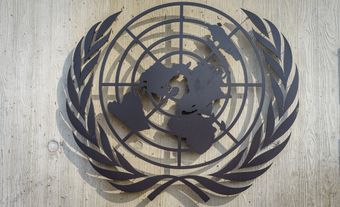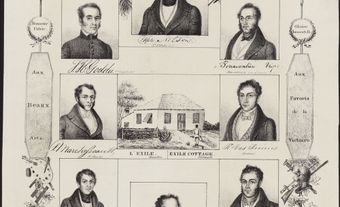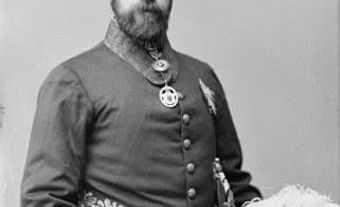Terrorism
Terrorism is the use of violence or threats of violence by individuals or groups against civilians or property. Terrorists seek to create terror as a way of achieving political ends. Terrorist activities include assassinations, bombings, hijackings, and kidnappings. Some states use terror against their own or enemy populations, but this is not classified as terrorism under Canadian or international law. Few violent extremists would accept the label "terrorist," a politically-charged term that carries highly negative connotations. Instead, most describe themselves as fighters for freedom and against injustice.
Terrorism is a phenomenon with deep roots. Scholars have noted examples of terrorism in the Middle East in the ancient and medieval periods. Since the late nineteenth century, terrorist attacks have been common. From 1880 to 1910, anarchists killed several world leaders, including US President William McKinley and Italy's King Umberto I. In 1893, anarchists set off a bomb in Barcelona's Teatro Liceo, killing 22 and wounding 50. In 1914, a nationalist group in Bosnia assassinated both the heir to the Austro-Hungarian throne and his wife, setting off a sequence of events that led to the outbreak of the First World War. Since then, terrorism has continued to be practiced by religious, nationalist, and ideological groups, both on the left and right of the political spectrum.
Although Canada has had a relatively peaceful history, it has not been immune from terrorism. Canadians have been victims of hundreds of terrorist acts. While on Canadian soil, foreign terrorist groups have raised funds, planned operations, and carried out attacks. Canadian citizens have committed terrorism abroad. Despite the hundreds of attacks by or against Canadians, terrorism has seldom advanced the causes of those who have used it.
Domestic Terrorism in Canada
In 1923, the Sons of Freedom initiated what is likely Canada's first domestic terrorist campaign. Residing in British Columbia, the Freedomites were a radical splinter group of DOUKHOBORS, a religious sect that rejected state authority. In contrast to Orthodox Doukhobors, who were pacifist, the Freedomites used violence to protest against government interference in their lives, particularly compulsory schooling and the mandatory registration of births, deaths, marriages, and land ownership. Freedomite terrorism consisted of the bombing or burning of schools, homes, businesses, railway lines, and electrical wires. Over a 40-year period, the Freedomites carried out several hundred attacks against the government, railway and power companies, and Doukhobors whom the zealots judged to be excessively materialistic. The most dramatic incident was the 1962 bombing of a power transmission tower in south-eastern British Columbia. The frequency of the incidents declined after 1962, when 36 Freedomites were convicted of arson or conspiracy to commit arson and were sentenced to 12 years in prison. In the 1970s and early 1980s, the Freedomites executed only a few isolated attacks.
Approximately 300 acts of terrorism were carried out on Canadian soil in the 1960s, almost all committed by the Freedomites or the FRONT DE LIBÉRATION DU QUÉBEC (FLQ). To promote its objective of an independent Quebec, the FLQ executed a series of bombings against a range of targets, including the federal government, the post office, the armed forces, the ROYAL CANADIAN MOUNTED POLICE, the CANADIAN BROADCASTING CORPORATION, CANADIAN NATIONAL RAILWAYS, and the Montreal Stock Exchange. Although the intent was usually to destroy property, at least six people died as a result of FLQ operations, and many others were severely injured.
In October 1970, the FLQ kidnapped the British trade commissioner in Montreal, James Cross, and Quebec's labour minister, Pierre LAPORTE. The Quebec government requested the assistance of the Canadian military to deal with the crisis. The federal government of Prime Minister Pierre Trudeau invoked the WAR MEASURES ACT and suspended civil liberties, allowing the police to arrest hundreds of individuals without charge. Laporte was strangled to death, and his captors were later convicted of murder and kidnapping. The individuals holding Cross were flown to Cuba in exchange for the diplomat's release. Within two years of these events, FLQ activities had come to an end, though others used the group's name when carrying out attacks in the 1970s and 1980s.
In the early 1980s, a small anarchist group, Direct Action, began a violent campaign against pollution, pornography, and the arms industry. The group's activities were funded through fraud and armed robbery. Targets included a BC Hydro sub-station on Vancouver Island and the Toronto-area plant of Litton Systems, which manufactured cruise missile components. Operating under the name Wimmin's Fire Brigade, some group members firebombed three adult video stores in Greater Vancouver. In all, Direct Action members caused more than $10 million in damage and injured ten people. The group's operations ceased when the five key members (known as the Squamish Five) were arrested in January 1983. They pleaded guilty and served prison terms ranging from four to eight years.
In the 1980s and 1990s, extremists from the animal rights and environmental movements committed several acts of terrorism in Canada. The Canadian branch of the Animal Liberation Front freed animals from several research laboratories and then vandalized or set fire to the facilities. A group calling itself "the Justice Department" mailed death threats to hunting guides and fur retailers, along with razor blades that were covered in rat poison or in blood that the organization claimed was infected with HIV. Eco-terrorists destroyed a $2 million logging bridge in BC in 1995 and caused $5 million in damage to a logging facility in Alberta in 1997.
International Terrorism in Canada
The vast majority of terrorist acts in Canada were carried out by Canadians to achieve domestic objectives. There have also been a small number of incidents of an international nature committed on Canadian soil.
International terrorism in Canada can be traced back to the FENIAN Brotherhood in the days before Confederation. The Fenians were an Irish nationalist group created in the 1850s with the intent of using force to advance the cause of Irish independence from Britain. After the US Civil War ended in 1865, the organization's US branch swelled with an influx of veterans. Members were divided on tactics: some supported assassination and other terrorist activities, while others believing the group should act like a military force, engaging in conventional battles against the Canadian or British military.
In 1866, the Fenians carried out a series of ineffective raids on targets in New Brunswick, Canada East, and Canada West. They destroyed bridges, cut telegraph wires, damaged or stole private property, and engaged in combat against local militias. These incidents succeeded only in increasing public support for Confederation, which would offer the colonies greater security. In 1868, Thomas D'Arcy MCGEE, a member of Parliament and father of Confederation, was assassinated, most likely by a Fenian who was acting without authorization from the brotherhood. Subsequent attacks were unsuccessful: an invasion in Quebec in 1870 was repulsed and in 1871 the group botched its final raid in Manitoba.
The number of incidents of international terrorism in Canada began to grow in the 1960s. From the 1960s to the 1980s, there were approximately 60 acts of international terrorism on Canadian soil. In 1965, a group protesting the American war in Vietnam dynamited three US Air Force jets at the Edmonton Industrial Airport, destroying two aircraft and killing a security guard. In 1968, anti-war activists in Toronto and Sarnia bombed homes owned by executives of firms that supplied the US military with weapons and other materiel. In the 1960s, Croatian extremists bombed the Yugoslavia's embassy in Ottawa and consulates in Toronto and Montreal. Between 1966 and 1980, anti-Castro Cubans bombed their country's diplomatic posts in Canada several times, killing one person in 1972. Letter-bombs were delivered in 1972 to the Israeli embassy in Ottawa and the consulate in Montreal. In the 1980s, Armenian terrorists shot two Turkish diplomats, killing one and paralyzing the other. They also took the Turkish ambassador hostage, killing a Canadian security guard in the process. In 1986, SIKH extremists shot and wounded a cabinet minister from the Indian state of Punjab who was visiting Vancouver Island.
By far the most lethal attack in this period was the 1985 Air India bombing. Sikh extremists in British Columbia, determined to carve out a separate Sikh homeland in the Indian province of Punjab, placed suitcase bombs on two commercial airplanes. One bomb detonated as the baggage was being transferred at the Narita Airport near Tokyo, killing two and wounding four. Another bomb exploded as Air India flight 182 was in mid-air off the cost of Ireland, killing 329 and making it the world's deadliest terrorist attack before 11 September 2001. Three conspirators were charged, but only one was convicted. In 2006, the federal government appointed a commission of inquiry to investigate the bombing and recommend improvements to Canada's counter-terrorism efforts. The commission held hearings from September 2006 to February 2008, but has yet to release its final report.
International terrorist groups have recruited members, distributed propaganda, and forged documents while on Canadian soil. They have also used Canada as a base for fundraising, soliciting donations and carrying out theft and fraud to finance their activities. A very small number of immigrants to Canada have been members of terrorist groups, including extremists from North Africa, the Middle East, and Southern Asia.
Al Qaeda and September 11, 2001
In the 1990s, Canada was home to at least two groups connected to the Islamist terrorist organization Al Qaeda. A cell of the Armed Islamic Group, an Algerian group affiliated with Al Qaeda, operated in Montreal, raising funds through theft and fraud. Several members had trained at an Al Qaeda camp in Afghanistan, including Ahmed Ressam, who was caught in Port Angeles, Washington, in December 1999 with explosives and detonators in his trunk. Ressam, whom the media dubbed the Millennium Bomber, intended to blow up the Los Angeles International Airport on or around 1 January 2000. In Toronto, another group was led by Ahmed Said Khadr, a friend of Al Qaeda leader Osama bin Laden. Khadr raised funds in Canada for Islamist attacks abroad, including the 1995 bombing of the Egyptian embassy in Islamabad, which killed 18 and injured 75.
The Al Qaeda attacks on New York and Washington on 11 September 2001, killed 3000, including two dozen Canadians. Canada responded by dispatching troops to Afghanistan and the Arabian Gulf to take part in the US-led international campaign against terrorism. In the fall of 2001, Parliament passed the ANTI-TERRORISM ACT, which increased the sentences for terrorist acts, made it easier to freeze or seize financial assets of suspected terrorists, restricted the public release of sensitive information, and gave the police new powers of surveillance, arrest, and detention. In November 2002, bin Laden suggested that Canada was one of the countries Al Qaeda would target in future attacks.
The US-led coalition in Afghanistan shut down Al Qaeda's training facilities and disrupted the group's organization, making it difficult for the organization to launch further attacks. But Al Qaeda had already trained a large number of terrorists, members of other organizations who remain connected to Al Qaeda through an international terrorist network. They took up the cause, carrying out bombings in several cities, including Bali (2002), Madrid (2004), and London (2005).
Al Qaeda also inspired a home-grown terrorist threat in Canada and several other countries. In 2004, police arrested Momin Khawaja, an Ottawa native who had worked with British Islamists on a plot to set off bombs in the United Kingdom. In 2008, Khawaja was convicted under Canada's Anti-Terrorism Act. In 2006, police arrested 18 individuals in Toronto (the Toronto 18) and charged them with planning terrorist attacks. The group had planned to set off truck bombs at the Toronto Stock Exchange and the Toronto regional headquarters of the Canadian Security Intelligence Service (CSIS). The 18 also intended to storm the Parliament buildings in Ottawa, where they would take hostages and behead the prime minister. Seven of the suspects were released after charges against them were stayed. Eleven were eventually found guilty.
Counterterrorism
Many branches of the federal government are involved in Canada's anti-terrorism efforts. The CANADIAN SECURITY INTELLIGENCE SERVICE (CSIS) is responsible for investigating terrorist threats. Enforcement of the country's anti-terrorism laws is in the hands of the Royal Canadian Mounted Police (RCMP). The Financial Transactions and Reports Analysis Centre of Canada (FINTRAC) investigates potential terrorist financing in Canada. The Canadian Border Services Agency, the Department of Public Safety, and the Department of Citizenship and Immigration use security certificates to remove from Canada individuals who do not have a right to be in the country and who pose a serious threat. The DEPARTMENT OF FOREIGN AFFAIRS AND INTERNATIONAL TRADE works with other countries to combat terrorism, sharing information and helping to develop international agreements on specific terrorist acts.
At the Department of National Defence, the Chief of Defence Intelligence leads an organization that analyses terrorist threats that may affect the Canadian Forces. The Communications Security Establishment (CSE) collects intelligence by monitoring foreign telecommunications and other signals exchanged between terrorists. Canada receives much intelligence through sharing arrangements with its allies, particularly the US, Great Britain, and Australia. Joint Task Force Two (JTF 2), a special operations unit of the Canadian Forces, is trained to carry out counter-terrorism operations at home and abroad.

 Share on Facebook
Share on Facebook Share on X
Share on X Share by Email
Share by Email Share on Google Classroom
Share on Google Classroom


